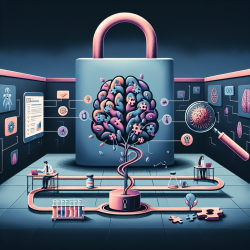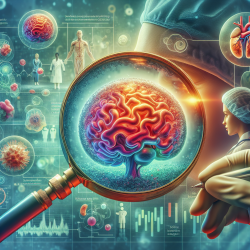Understanding CLN2 Disease: A Practitioner’s Guide to Enhanced Care
CLN2 disease, a form of Neuronal Ceroid Lipofuscinosis (NCL), is a rare and challenging neurodegenerative disorder. It is caused by a deficiency of the enzyme tripeptidyl peptidase 1 (TPP1). Due to its rarity and the non-specific nature of its symptoms, CLN2 often goes undiagnosed until significant neurological damage has occurred. However, recent guidelines offer practitioners a roadmap to improve diagnosis and management, ultimately enhancing patient outcomes.
Diagnosis: Catching CLN2 Early
Early diagnosis is crucial in managing CLN2 disease effectively. The guidelines recommend that practitioners be vigilant for signs such as speech delay, clumsiness, and unexplained epilepsy in children under four. Diagnostic confirmation involves demonstrating low TPP1 enzyme activity and identifying pathogenic variants in the CLN2 gene. Practitioners should advocate for newborn screening to catch the disease early, allowing for timely intervention.
Management: A Multidisciplinary Approach
Managing CLN2 requires a holistic, multidisciplinary approach. The guidelines suggest involving a team of specialists, including pediatric neurologists, rare disease experts, and therapists. Emotional and psychological support for families is also emphasized. By coordinating care, practitioners can address the diverse symptoms of CLN2, improving the quality of life for patients and their families.
Interventions: Exploring Treatment Options
Currently, enzyme replacement therapy (ERT) with cerliponase alfa is the only approved treatment for CLN2. Administered via intraventricular infusion, this therapy has shown promise in slowing disease progression. Practitioners should ensure that treatment is provided by a team experienced in CLN2 management, including the use of necessary devices. Additionally, ongoing clinical trials may offer new therapeutic avenues, underscoring the importance of staying informed about emerging treatments.
Additional Considerations: Beyond the Basics
Beyond medical treatment, practitioners should focus on social care considerations, such as communication support and mobility aids, to enhance patient interaction and activity. Pain management, addressing complex movement disorders, and nutritional care are also vital components of comprehensive care. Practitioners should engage with families to ensure that all aspects of the patient’s well-being are addressed.
Encouraging Further Research
While the guidelines provide a solid foundation for managing CLN2, there are still knowledge gaps that require further research. Practitioners are encouraged to contribute to ongoing studies and share insights from their practice. By doing so, they can help refine treatment protocols and improve outcomes for all patients with CLN2 disease.
To read the original research paper, please follow this link: Guidelines on the diagnosis, clinical assessments, treatment and management for CLN2 disease patients.










